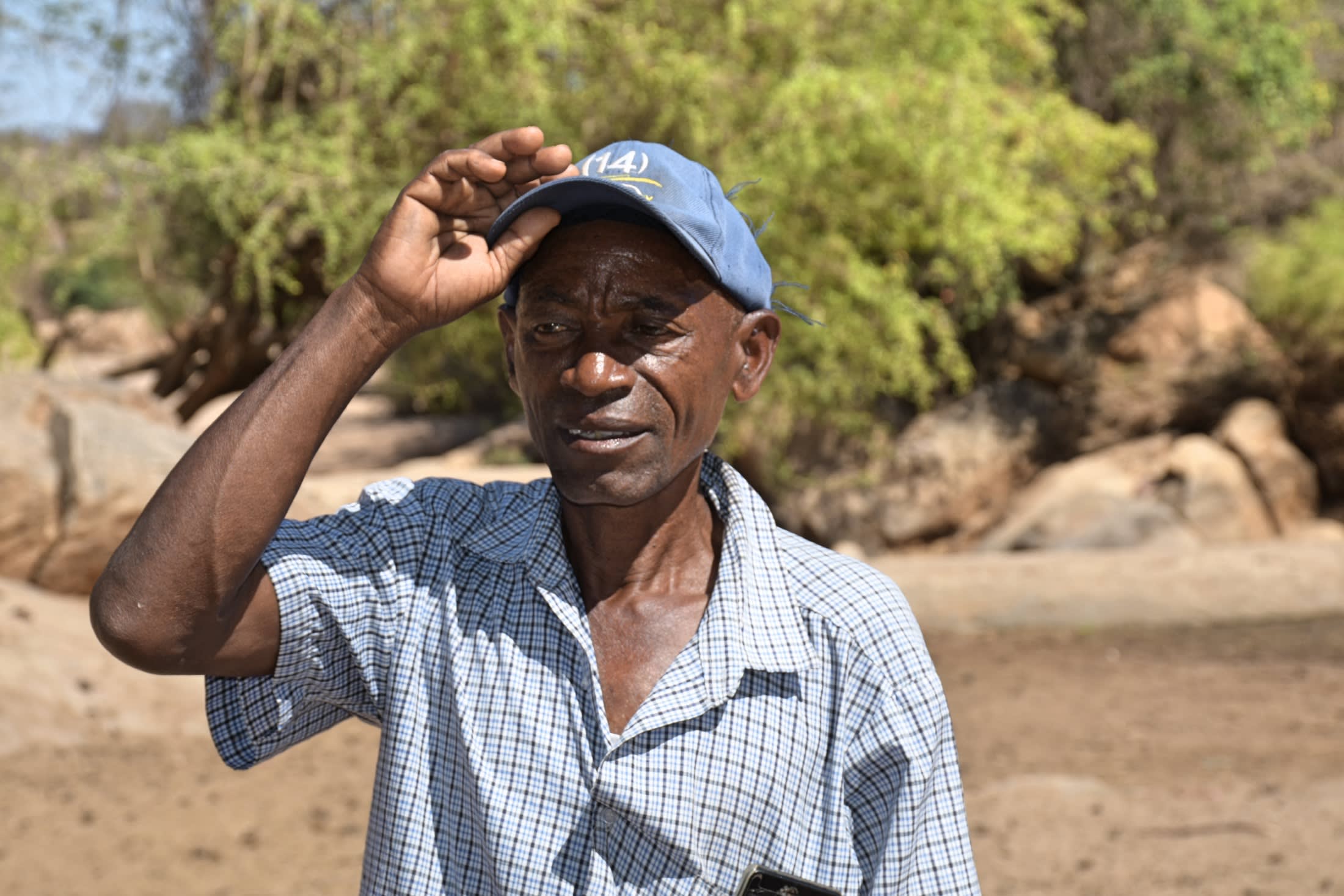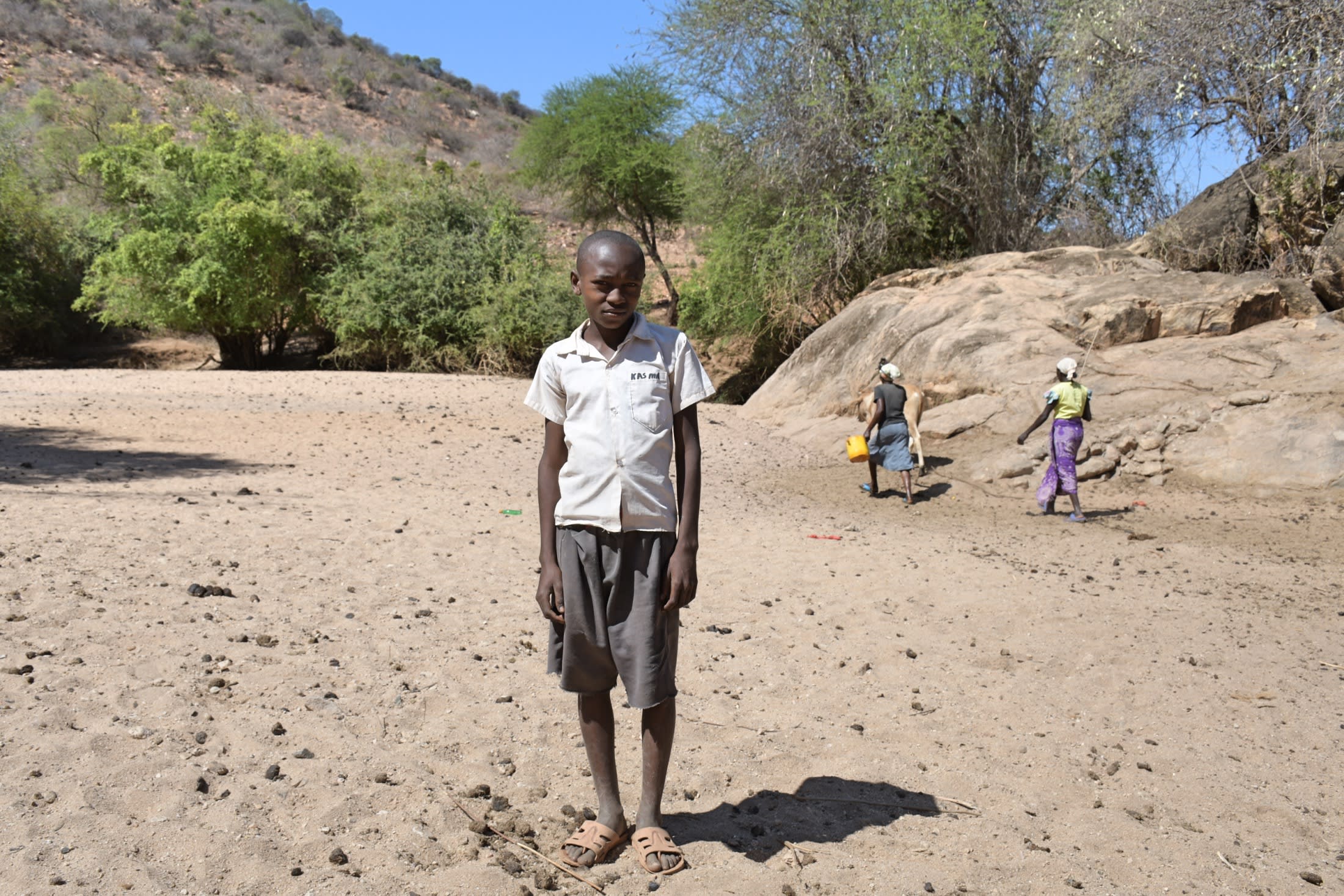Most people in Kitulini must travel over three kilometers (1.86 miles) each way to the nearest water source. Said source is just a hole dug into a dry riverbed, but it's the 3,000 community members' only option.
Walking this distance takes a substantial amount of time in itself. But with 3,000 people all vying for water in the same spot, people arrive to the riverbed only to wait for their turn to scoop the brown, salty water into their jerrycans, one gourd-full at a time. Some families purchase donkeys so they can collect more water per trip, but not everyone can afford such a luxury.
With so much time wasted fetching water for households, people lack sufficient energy for things like farming or studying. This, in turn, holds community members back. Without enough food, they can't feed their families properly or sell any surplus for income.

"Most of us depend on this water point, which usually offers little water during peak drought periods," said 63-year-old farmer James Muthui Mukala (pictured above). "Thus, I am forced to bear the long queues, exhaustion, and time wastage. I cannot fully focus on farming or irrigating my garden because [our] water is insufficient. During the short rains, the water is contaminated because all the dirt finds its way to the open scoop hole."
"When I am sent to fetch water for my family, I find long queues that consume most of my time and energy," said 14-year-old Mwacha K (shown below, standing in the dry riverbed where people fetch water). "Just like other days, today I am waiting for my turn to fetch water at the scoop hole. I am left with little time to play with my friends or conduct remedial studies."

If the long distance and wasted time weren't enough, the water from the scoop holes is also not safe for human consumption. In the picture above, the riverbed is dotted with donkey waste, and this is the same soil that people dig down into to reach water. With no other water sources for miles around, the scoopholes are also shared with local wildlife. Dust, feces, salt, and other contaminants infest the water these people drink every day.
Unsurprisingly, people here often contract water-related illnesses like typhoid and dysentery. Infections like these can be deadly, especially when families don't have spare money for treatment. Without time or energy to spend on their studies and vocations, the spiral of water shortage and illness continues and worsens with each passing dry season.
The people of Kitulini need their own water source close to home so they can spend their time how they would like instead of walking and waiting in lines for dirty water.
Note: Our proposed water point can only serve 300 people per day. We are working with the community to identify other water solutions that will ensure all 3,000 people in the community have access to safe and reliable drinking water.
What We Can Do:
Our main entry point into this community has been the Self-Help Group, which comprises households working together to address water and food scarcity in their region. These members will be our hands and feet in constructing water projects and spreading the message of good hygiene and sanitation to everyone.
Hand-Dug Well
This particular hand-dug well will be built adjacent to a sand dam project, which will supply clean drinking water once it rains. We have provided the group with the tools needed for excavation. With the guidance of our artisans and mechanics, the excavated well will be cased, sealed with a well pad, and then finished with a new AfriDev pump.
Excavation takes a month or more on average, depending on the nature of the rock beneath. Construction of the well lining and installation of the pump takes 12 days maximum. The well will be lined with a concrete wall including perforations so that once it rains, water will filter in from the sand dam.
This well will bring clean water closer to families.
New Knowledge
These community members currently do their best to practice good hygiene and sanitation, but their severe lack of water has significantly hindered reaching their fullest potential.
We will hold hygiene and sanitation training sessions with the Self-Help Group and other community members to teach essential hygiene practices and daily habits to establish at the personal, household, and community levels. This training will help to ensure that participants have the knowledge they need to make the most out of their new water point as soon as the water is flowing.
One of the most important topics we plan to cover is handling, storage, and water treatment. Having a clean water source will be extremely helpful, but it is useless if water gets contaminated when it is consumed. We will also emphasize the importance of handwashing.
The community and we firmly believe that all of these components will work together to improve living standards here, which will help to unlock the potential for these community members to live better, healthier lives.
We typically work with self-help groups for 3 to 5 years on multiple water projects. We will conduct follow-up visits and refresher training during this period and remain in contact with the group after all of the projects are completed to support their efforts to improve sanitation and hygiene.

 Protected Dug Well
Protected Dug Well
 Rehabilitation Project
Rehabilitation Project














